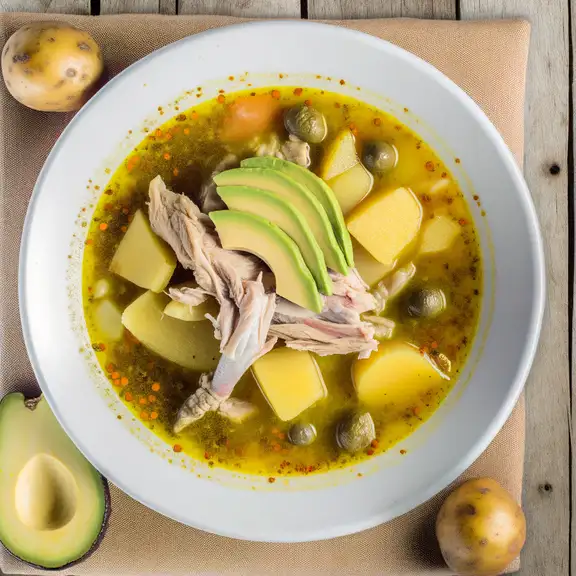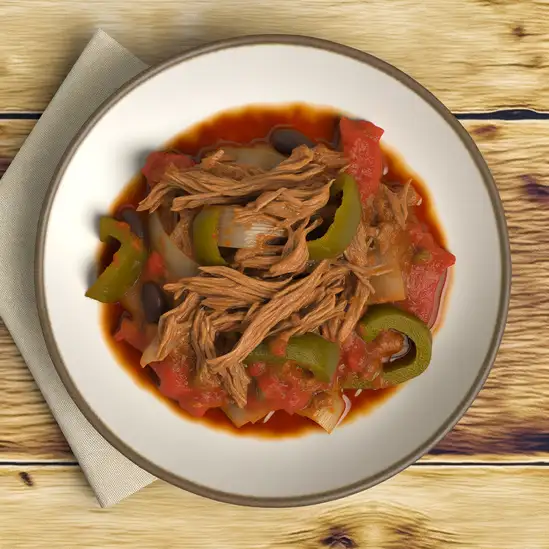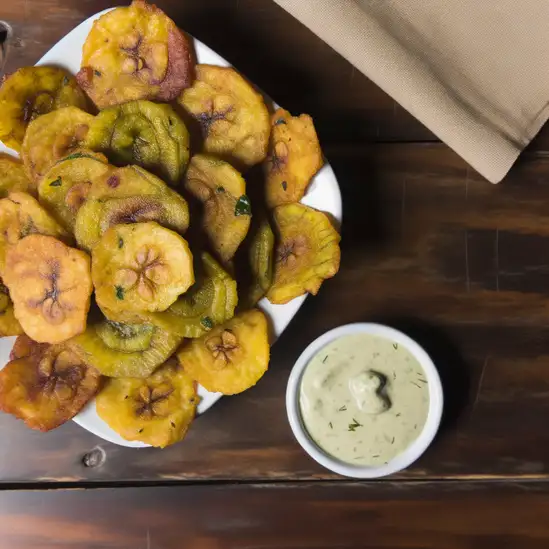



If you ever find yourself in Cuba,don’t miss out on Santiago de Cuba — it’s like stepping into the heartbeat of the island. The moment you arrive,there’s this vibrant energy that wraps around you,a mix of Afro-Cuban rhythms pulsing through the streets and the warm,salty breeze drifting in from the Caribbean Sea. Walking through the city,you’ll catch the scent of freshly brewed Cuban coffee mingling with the faint aroma of grilled street food,while the colorful colonial buildings seem to hum stories of revolution and resilience. Santiago isn’t just a place; it’s a feeling. The locals greet you with genuine smiles and an easy-going spirit that invites you to slow down and soak it all in. Music spills out from every corner — from lively son and salsa bands to the soulful sounds of rumba — making it impossible not to tap your feet or join in a spontaneous dance. The city’s rich history is palpable,from the imposing Castillo del Morro guarding the bay to the cobblestone streets of the old town,where every plaza and café has a tale to tell. What really makes Santiago stand out is its blend of cultures and traditions,a vibrant tapestry woven from African,Spanish,and Caribbean influences. Whether you’re savoring a plate of ropa vieja at a local paladar or watching the sunset paint the sky over the bay,Santiago de Cuba leaves you with a deep sense of connection — to the people,the music,and the soul of Cuba itself.
The information on this page is currently being reviewed by Tripkliq and should be used as a guide only
Eng word: Hello
Eng pronunciation: OH-lah
Local language: Hola
Eng word: Goodbye
Eng pronunciation: ah-DYOS
Local language: Adiós
Eng word: Thank you
Eng pronunciation: GRAH-syahs
Local language: Gracias
Eng word: How much
Eng pronunciation: KWAN-toh KWEH-stah
Local language: ¿Cuánto cuesta?
Eng word: Toilet
Eng pronunciation: BAH-nyoh
Local language: Baño
Eng word: Help me
Eng pronunciation: ah-YOO-dah-meh
Local language: Ayúdame
Eng word: Yes
Eng pronunciation: SEE
Local language: Sí
Eng word: No
Eng pronunciation: NO
Local language: No
Eng word: Excuse me
Eng pronunciation: pehr-DOHN
Local language: Perdón
Santiago de Cuba was founded by Spanish conquistador Diego Velázquez de Cuéllar on July 25,1515. It is one of the oldest cities in Cuba and has a rich colonial history.
The Cathedral of Our Lady of the Assumption, located in the heart of Santiago de Cuba, is a stunning example of colonial architecture. It was originally built in 1528 and has been rebuilt several times due to earthquakes and pirate attacks.
This UNESCO World Heritage Site, also known as Castillo del Morro, was built in 1638 to protect Santiago de Cuba from pirate attacks. It offers breathtaking views of the bay and is a must-visit for history enthusiasts.
Santiago de Cuba is often referred to as the 'Cradle of the Cuban Revolution.' It was here that Fidel Castro and his followers launched the first attack on the Moncada Barracks on July 26,1953, marking the beginning of the revolutionary movement.
The Carnival of Santiago de Cuba is one of the most famous and vibrant festivals in the Caribbean. Held annually in July, it features colorful parades, traditional music, and dance, reflecting the city's rich cultural heritage.
Baconao Park is a UNESCO Biosphere Reserve located near Santiago de Cuba. It offers a variety of attractions, including prehistoric-themed sculptures, a botanical garden, and the Great Rock, which provides panoramic views of the surrounding area.
Casa de la Trova is a legendary music venue in Santiago de Cuba, known for its live performances of traditional Cuban music, including son and trova. It is a great place to experience the city's musical heritage.
Céspedes Park is the central square of Santiago de Cuba and a popular gathering place for locals and tourists alike. It is surrounded by important historical buildings, including the city hall and the Cathedral of Our Lady of the Assumption.
Santa Ifigenia Cemetery is the final resting place of many notable figures in Cuban history, including national hero José Martí and former President Fidel Castro. The cemetery is known for its impressive mausoleums and monuments.
In Municipio de Santiago de Cuba, the most common Power Adaptor is Type A, Type B.



A hearty soup made with various meats, root vegetables, and corn, reflecting the rich agricultural heritage of the region.

Shredded beef cooked in a savory tomato sauce with bell peppers and onions, often served with rice and black beans.

Twice-fried green plantains that are crispy on the outside and soft on the inside, typically served as a snack or side dish.

A creamy caramel custard dessert that is a popular sweet treat in Cuban cuisine.

A traditional Cuban dish made of rice and black beans cooked together, seasoned with spices and often served as a side.

Boiled cassava root served with a garlicky citrus sauce, often enjoyed as a side dish with meat.

A dish of black beans and white rice cooked separately and then mixed together, symbolizing the historical coexistence of cultures.

Slow-roasted marinated pork leg, known for its crispy skin and tender meat, often served during festive occasions.
Imagine stepping into a place where time seems to slow down,yet every corner buzzes with life—that’s Havana. The city greets you with a warm,sun-soaked embrace,where pastel-colored buildings wear their peeling paint like badges of history. Walking through its streets,you’ll hear the soulful strum of a guitar mingling with the distant chatter of locals sharing stories over strong Cuban coffee. The air carries a mix of salty sea breeze,sweet tobacco,and the faint aroma of frying plantains from street vendors.
Havana’s character is a beautiful blend of resilience and celebration. Classic American cars,polished to a shine,cruise alongside vintage bicycles,creating a moving museum of the past. The city pulses with music—whether it’s the lively beats spilling out of a neighborhood bar or the soft rhythms of a late-night jazz club. People here have a way of making you feel like you belong,inviting you to dance,laugh,and savor life’s simple pleasures.
Don’t miss the chance to sip a perfectly crafted mojito in a sunlit plaza,watching the world drift by. Taste the rich,smoky flavors of Cuban cuisine,from ropa vieja to fresh seafood caught that morning. Havana isn’t just a place to visit; it’s a place to feel alive,to soak in stories etched into every brick and smile. Trust me,once you’ve wandered its vibrant streets,Havana’s spirit stays with you long after you leave.
Imagine stepping into a place where the sun kisses your skin and the ocean breeze carries the scent of salt and tropical blooms—welcome to Varadero,Cuba. This isn’t just a beach town; it’s a vibrant stretch of life where turquoise waters lap against powdery white sands,inviting you to slow down and soak it all in. The rhythm of the waves blends with the distant hum of salsa music drifting from open-air cafes,creating a soundtrack that feels both lively and laid-back.
Walking through Varadero,you’ll notice the colorful buildings with their faded pastel hues,each telling stories of a rich Cuban heritage. Locals greet you with warm smiles and a friendly “¡Hola!” as they go about their day,whether it’s selling fresh mangoes or crafting handmade cigars. The air is thick with the aroma of grilled seafood and sweet tropical fruits,tempting you to try a plate of ropa vieja or sip on a perfectly mixed mojito while watching the sun dip below the horizon.
What makes Varadero truly special is its blend of natural beauty and genuine Cuban spirit. It’s a place where you can lounge under swaying palms,dive into crystal-clear waters teeming with colorful fish,and then wander into town to experience the lively markets and vibrant street life. It’s not just a destination; it’s a feeling—a warm embrace of culture,nature,and simple pleasures that stays with you long after you leave.
If you find yourself wandering through Cuba,Cienfuegos is a place that quietly steals your heart without shouting for attention. There’s a gentle rhythm here,a laid-back elegance that feels like a slow dance between the sea breeze and colonial charm. As you stroll along the waterfront Malecón,the salty air mingles with the faint scent of grilled seafood from nearby paladares,while the soft hum of classic Cuban tunes drifts from open windows. It’s a city that invites you to pause,breathe,and soak in its graceful blend of history and everyday life.
The architecture is a feast for the eyes—French-inspired neoclassical buildings painted in pastel hues,their balconies draped with flowering vines. Walking through the central Parque José Martí,you’ll catch locals chatting animatedly,children playing,and the occasional street musician strumming a guitar,all under the warm Cuban sun. There’s a genuine warmth in the smiles here,a sense of community that feels both timeless and welcoming.
What really sets Cienfuegos apart is its balance of culture and calm. You can spend your mornings exploring the elegant Teatro Tomás Terry or the quirky Museo Provincial,then lose yourself in the vibrant colors of the local market. And when evening falls,the city lights up with a soft glow,inviting you to sip a cold mojito while watching fishing boats bob gently in the bay. Cienfuegos isn’t just a place to visit—it’s a place to feel,to savor,and to remember long after you’ve left.
If you ever find yourself wandering through Cuba,you absolutely have to spend some time in Municipio de Trinidad. The moment you step onto its cobblestone streets,there’s this warm,timeless energy that wraps around you like a familiar song. The pastel-colored colonial buildings,with their wrought-iron balconies and blooming bougainvillea,create a picture-perfect scene that feels like stepping back into the 18th century—but with a lively,modern heartbeat. You’ll hear the distant strum of guitars and the rhythmic pulse of salsa spilling out from cozy cafés,blending with the chatter of locals and the occasional clip-clop of horse-drawn carriages.
The air carries a mix of scents:freshly brewed Cuban coffee,sweet tropical fruits,and the salty hint of the nearby sea. Walking through the plazas,you can’t help but be drawn into the vibrant street life—artists sketching portraits,vendors selling hand-rolled cigars,and the laughter of children playing under the shade of ancient trees. There’s a genuine warmth in the people here; they’re proud of their heritage and eager to share stories about the city’s rich history and culture.
What makes Trinidad truly special is how it balances its past and present. You can explore museums and colonial mansions one moment,then lose yourself in the lively rhythms of a local music night the next. It’s a place where every corner invites you to slow down,soak in the atmosphere,and savor the simple joys of Cuban life. Trust me,once you’ve experienced Trinidad,it stays with you long after you leave.
Kingston pulses with a vibrant energy that grabs you the moment you step off the plane. It’s a city where the rhythm of reggae music seems to float through the air,blending effortlessly with the chatter of street vendors and the hum of bustling markets. Walking through its colorful neighborhoods,you’ll catch the scent of jerk spices mingling with the salty breeze from the nearby harbor. There’s a raw,authentic spirit here that feels alive in every corner—from the murals that splash stories across walls to the lively conversations spilling out of local cafes.
What makes Kingston truly unforgettable is its rich cultural heartbeat. This is the birthplace of Bob Marley,and you can feel his legacy everywhere—from the iconic Trench Town neighborhood to the reggae museums that celebrate Jamaica’s musical soul. But it’s not just about music; the city’s art scene,street food,and warm,welcoming people create a tapestry of experiences that invite you to slow down and soak it all in. Grab a plate of fresh ackee and saltfish or sip on a cold Red Stripe while watching the sunset paint the sky in fiery hues.
Kingston isn’t polished or pristine,but that’s exactly what makes it magnetic. It’s a place where history,culture,and everyday life collide in the most colorful,unexpected ways. If you’re up for an adventure that’s as much about feeling the city’s pulse as seeing its sights,Kingston will surprise you—and stay with you long after you leave.
Imagine stepping into Nassau and instantly feeling the warm embrace of island life—where the turquoise waters gently lap against pastel-colored buildings and the air hums with the rhythm of steel drums. This city pulses with a vibrant energy that’s both laid-back and lively,a place where history and modern Caribbean culture dance together effortlessly. Walking through the streets,you’ll catch the scent of saltwater mingling with the sweet aroma of tropical flowers and the irresistible smell of fresh conch fritters sizzling nearby.
Nassau’s character is a rich tapestry woven from its colonial past and Bahamian spirit. The chatter of locals,the colorful markets brimming with handmade crafts,and the lively chatter in cozy cafés make you feel like you’re part of a close-knit community. Don’t miss the chance to explore the bustling Straw Market or to wander through the charming streets of downtown,where every corner tells a story—from pirate legends to vibrant Junkanoo celebrations.
What really makes Nassau unforgettable is how it awakens your senses. The taste of a perfectly spiced Bahamian seafood dish,the feel of warm sand beneath your feet on Cable Beach,and the sight of a fiery sunset melting into the ocean horizon—all of it invites you to slow down and savor the moment. Whether you’re diving into crystal-clear reefs or simply sipping a cold drink while watching the world go by,Nassau has a way of making you feel alive,connected,and utterly enchanted.
Tourists may be offered to exchange money on the street at a better rate, but they often receive outdated or counterfeit Cuban pesos.
Vendors may sell counterfeit cigars claiming they are authentic Cuban brands, but they are often of poor quality.
Individuals may pose as official tour guides and charge for subpar or unnecessary services.
Locals may offer to help tourists find accommodations, restaurants, or attractions, but they often receive commissions and inflate prices.
Some establishments may inflate prices for tourists or add hidden charges to the bill.
Vendors may charge tourists significantly higher prices for souvenirs compared to locals.
Some locals may approach tourists with emotional stories to solicit money, which may not be genuine.
Unmetered taxis or drivers may quote inflated prices or take longer routes to overcharge tourists.
Cuba has very strict laws regarding drug use, possession, and trafficking. The use, possession, or trafficking of illegal drugs is severely punished and can result in long prison sentences. Tourists should avoid any involvement with illegal drugs to avoid serious legal consequences.
In Santiago de Cuba, smoking is generally allowed in public spaces, but there are restrictions in place similar to many other countries. Smoking is prohibited in enclosed public spaces such as restaurants, bars, and public transportation. Tourists should look for designated smoking areas and be mindful of local regulations to avoid fines.
Vaping is subject to similar regulations as smoking in Santiago de Cuba. It is prohibited in enclosed public spaces and on public transportation. Tourists should use designated smoking areas for vaping as well and be aware of local attitudes towards vaping, which may be less tolerant than in some other countries.
What are other people saying about Municipio de Santiago de Cuba?
Recent Social posts about Municipio de Santiago de Cuba
There is nothing to show you for now.